Ans. (b) non-uniform
43. The numerical ratio of displacement to distance for a moving object is
(a) always less than 1
(b) always equal to 1
(c) always more than 1
(d) equal or less than 1
Ans. (d) equal or less than 1
44. If the displacement of an object is proportional to square of time, then the object moves with
(a) uniform velocity
(b) uniform acceleration
(c) increasing acceleration
(d) decreasing acceleration
Ans. (b) uniform acceleration
45. Fill in the blanks:
The slope of velocity-time graph gives …………….. and the slope of displacement-time graph gives ……………..
Ans. acceleration, velocity
46. From the given υ – t graph, it can be inferred that the object is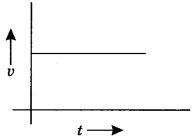
(a) in uniform motion
(b) at rest
(c) in non-uniform motion
(d) moving with uniform acceleration
Ans. (a) in uniform motion
47. Four cars A, B, C and D are moving on a levelled road. Their distance versus time graphs are shown in the adjacent figure. Choose the correct statement.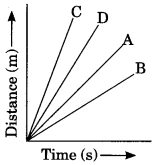
(a) Car A is faster than car D.
(b) Car B is the slowest.
(c) Car D is faster than car C.
(d) Car C is the slowest.
Ans. (b) Car B is the slowest.
48. Which of the following figures correctly represents uniform motion of a moving object?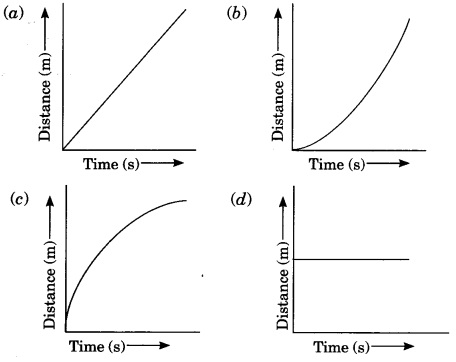
Ans. (a)
49. Velocity-time graph of an object is given below. The object has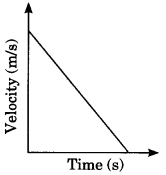
(a) Uniform velocity
(b) Uniform speed
(c) Uniform retardation
(d) Variable acceleration
Ans. (c) Uniform retardation
50. Which one of the following graphs shows the object to be stationary?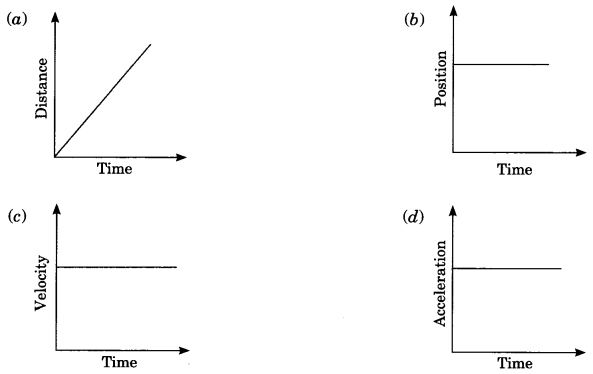
Ans. (b)
51. According to the given velocity-time graph, the object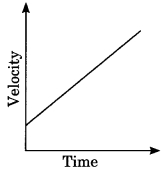
(a) is moving with uniform velocity
(b) has some initial velocity
(c) is moving uniformly with some initial velocity
(d) is at rest
Ans. (b) has some initial velocity
52. A car is moving along a straight road with uniform velocity. It is shown in the graph.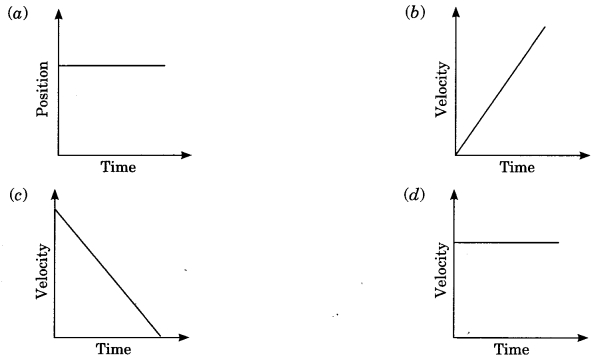
Ans. (d)
53. Which of the following graphs is not possible?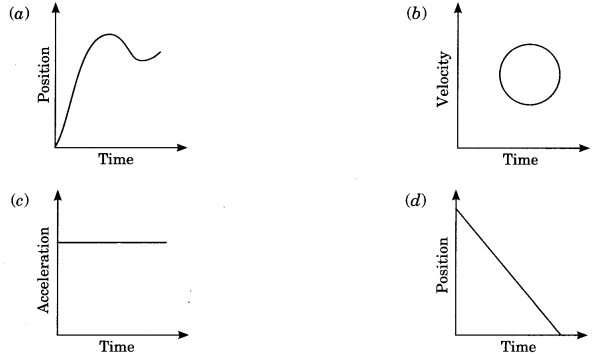
Ans. (b)

Post a Comment
Post a Comment